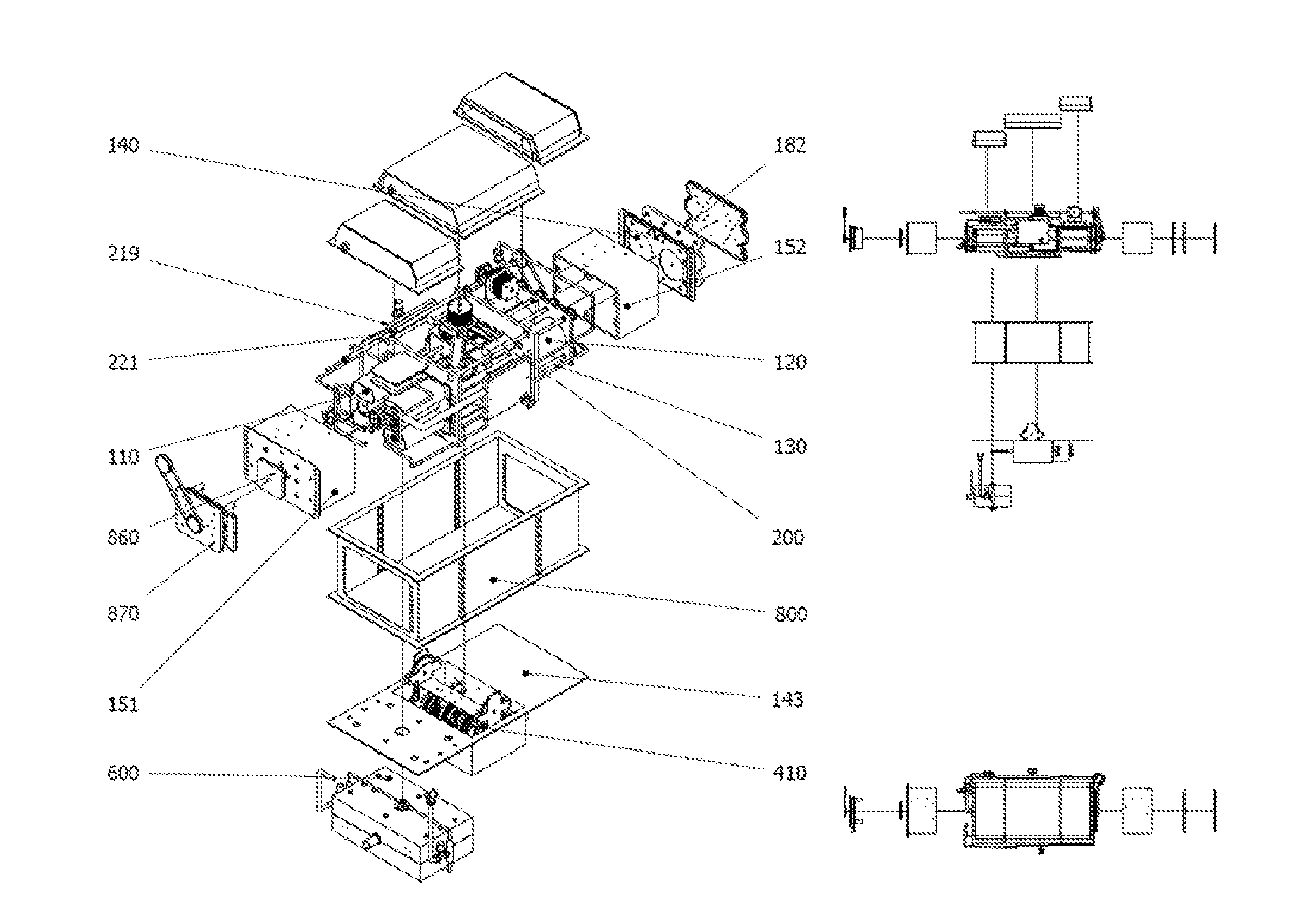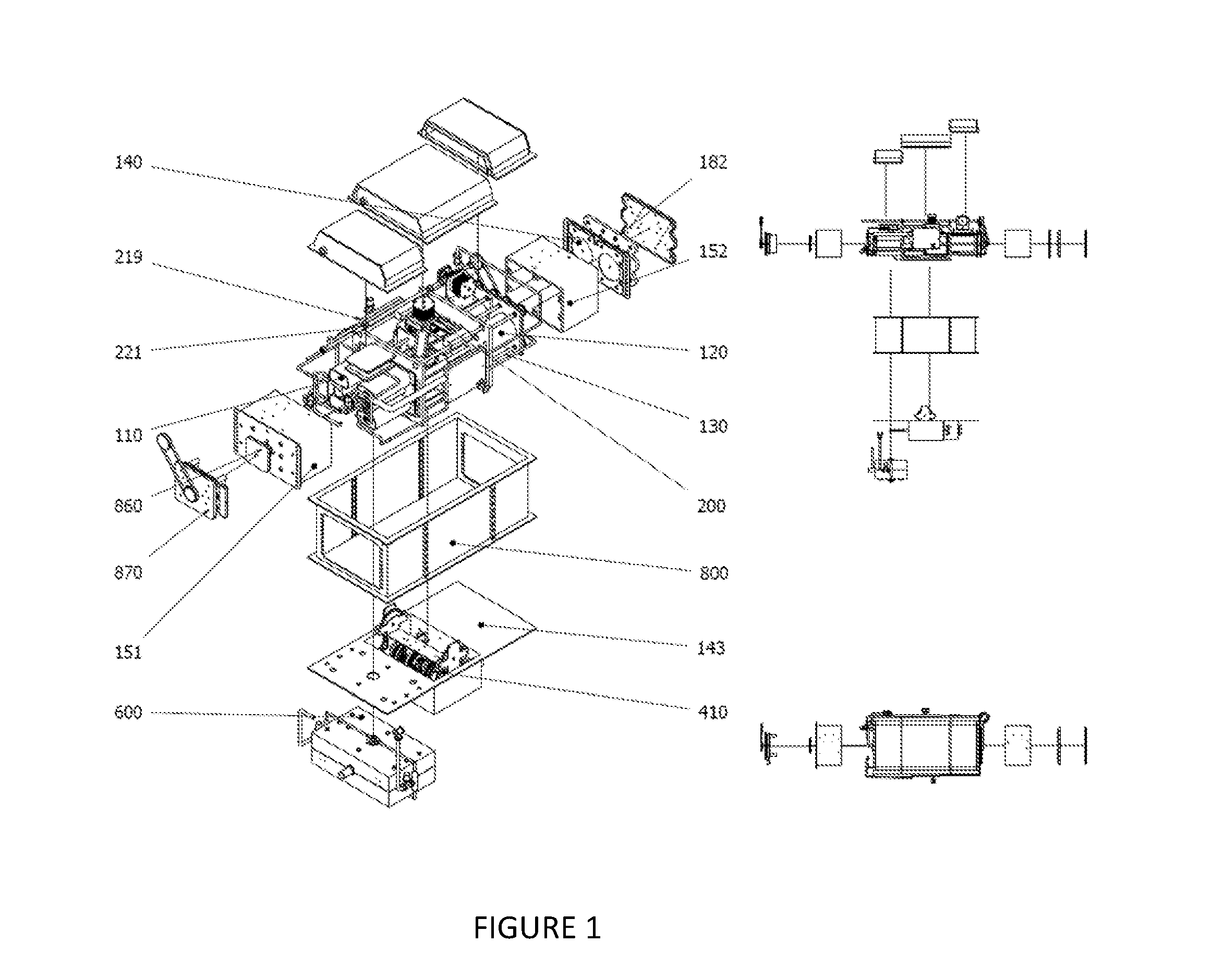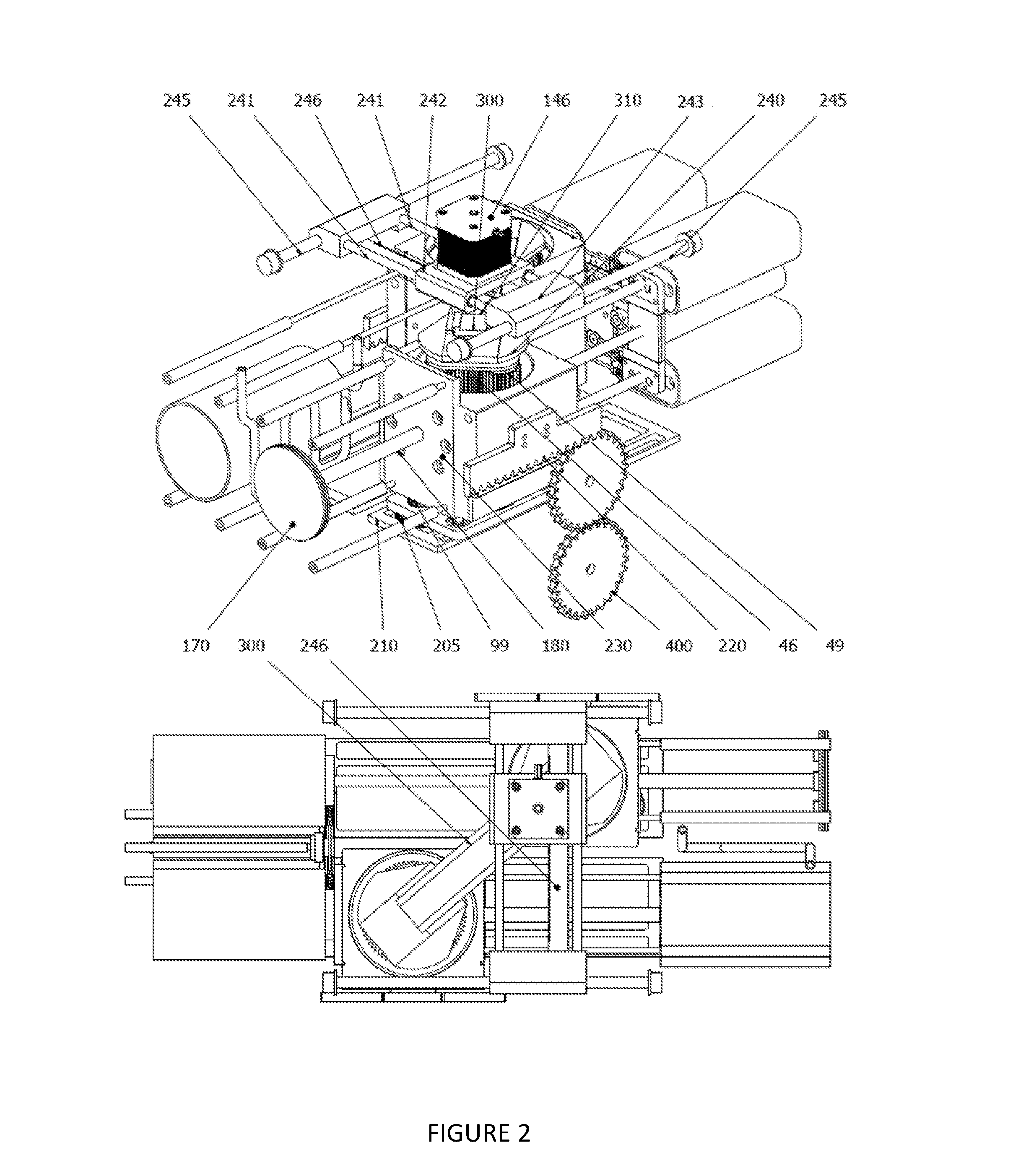Thermal engine with energy modulation mechanism
- Summary
- Abstract
- Description
- Claims
- Application Information
AI Technical Summary
Benefits of technology
Problems solved by technology
Method used
Image
Examples
Embodiment Construction
[0040]FIG. 1 shows a perspective view of the apparatus and its components in accordance with the mechanical structure and arrangement. The apparatus consists of a single or multiple stage compressor 110. The compressor 110 is cylindrical and has a thin wall of rust-resistant metal chambers where gas will be volumetrically reduced by pistons. When the gas is volumetrically reduced thermal energy is stored for each cycle of compression. In order to achieve optimum energy efficiency, the compressor 110 includes at least one pair of cylinders, each having a piston and a rod. The compressor 110 may also be comprised of a pair of compression units, each unit including a plurality of compressors for multi-staged compression. Although several configurations for the compressor 110 can be used, the embodiment described below is a two-staged compressor having two cylinders for the first stage and one cylinder for the second stage.
[0041]The compressor 110 is connected to a heat expander 120 and...
PUM
 Login to view more
Login to view more Abstract
Description
Claims
Application Information
 Login to view more
Login to view more - R&D Engineer
- R&D Manager
- IP Professional
- Industry Leading Data Capabilities
- Powerful AI technology
- Patent DNA Extraction
Browse by: Latest US Patents, China's latest patents, Technical Efficacy Thesaurus, Application Domain, Technology Topic.
© 2024 PatSnap. All rights reserved.Legal|Privacy policy|Modern Slavery Act Transparency Statement|Sitemap



